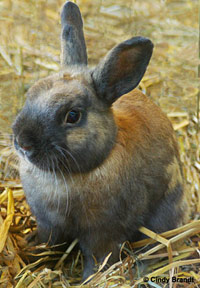Canines vs. Felines
Are Dogs More Intelligent Than Cats?
If you put a group of cat lovers and dog lovers in a room and pose the question: “Which species is more intelligent, dogs or cats?” You’ll have them fighting like, well, cats and dogs. However, a new study by Oxford University has come to the conclusion that because dogs are a more social species, they need more brainpower than solitary animals and so have developed bigger brains than cats over time. Researchers came to the conclusion that over the last 60 million years, dog’s brains grew more due to the demands of constant social interaction, and cat brains remained the same.
More than 30 years ago, psychologist Harry J. Jerison developed a measure he called the Encephalization Quotient or EQ. It is a mathematically sophisticated comparison of the actual brain weight of an animal compared to the expected brain mass for that animal’s body size. Based on the encephalization quotient, the brightest animals on the planet are humans, followed by great apes, porpoises, and elephants. Dogs follow closely behind elephants in their EQ.
Studies show that animals that live in social groups are always smarter and have larger EQ’s than animals that live in solitude. Because dogs live in packs, their interaction involves much more complex behavior concerning reasoning and problem solving. According to the co-author of the Oxford University study, Professor Robin Dunbar, “It is interesting to see that even animals that have contact with humans, like cats, have much smaller brains than dogs and horses because of their lack of sociality.”
However, does bigger brain size equal more intelligence? Lars Chittka, professor of sensory and behavioral ecology at the University of London says, “In bigger brains we often don’t find more complexity, just an endless repetition of the same neural circuits over and over. This might add detail to remembered images or sounds, but not add any degree of complexity.”
Time magazine recently ran a cover story about the intelligence of animals. Their experts determined that while the size of an animal’s brain has a relation to intelligence, you must also look at the structure of the brain. The cerebral cortex is the most evolved region of the brain, the place where creativity lies. So if we were to judge an animal’s intelligence by its creativity, would dogs still win out?
There are obviously other ways to measure intelligence than brain size. New Scientist magazine created 11 categories to pit dogs and cats against each other. Cats beat out dogs on vocalization, however, dogs won most of the other categories, including problem solving and utility. According to NNew Scientist, “Other than being easy on the eyes and relaxing to pet, the only real utility that cats provide, besides companionship, is the ability to protect a home from vermin.” Although that might sound a little harsh, it is true that dogs can perform many vital tasks that cats cannot, including sniffing out land mines, search and rescue, leading the blind and most recently, sniffing out bed bugs.
There are many obstacles in the way of our understanding of animal intelligence. I know many of my friends and I do not agree whether all nonhuman species experience the same awareness. Of course we believe dogs and cats do, but what about ants and flies? Who’s to say a butterfly has more brainpower than an ant? However, most people would be dismayed if they saw someone squashing a butterfly and flushing it down the toilet. Our judgment on the intelligence of an animal is clouded by our feelings toward that species. So maybe there are just more people on “team dog” than “team cat”?
Even though there are countless studies and various opinions on the cat versus dog intelligence question, for anyone who has ever had the privilege of sharing the company of a cat, you’ve probably heard the saying, “dogs have an owner, cats have a staff.” Now who’s the smarter one?
Announcements
This holiday season, open your heart and your home to a pet from a shelter or rescue group. For more information, visit petfinder.com

Adoptable Pet of the Week
Clark is a small, adule male who is a sweet and gentle pet. He is the right size for snuggling. He would like to watch TV with you, snooze on your bed, and eat as much of your breakfast banana as he can get.
BUNS is having a special on adoptions this month. If you adopt a rabbit or guinea pig, you will receive a litter pan filled with pellets, hay, a crock, a toy and a water bottle.
Bunnies Urgently Needing Shelter (B.U.N.S.) is a volunteer organization that cares for abandoned rabbits. B.U.N.S is located at the Santa Barbara County Animal Shelter, 5473 Overpass Rd. B.U.N.S. works to find bunnies permanent homes, and educates the public on caring for a companion rabbit.
For more information, call the County Shelter at 681-5285 or call BUNS at 683-0521 and leave a message for someone to call you back. Or visit bunssb.org
Lisa Acho Remorenko is executive director of Animal Adoption Solutions, www.animaladoptionsolutions.com



